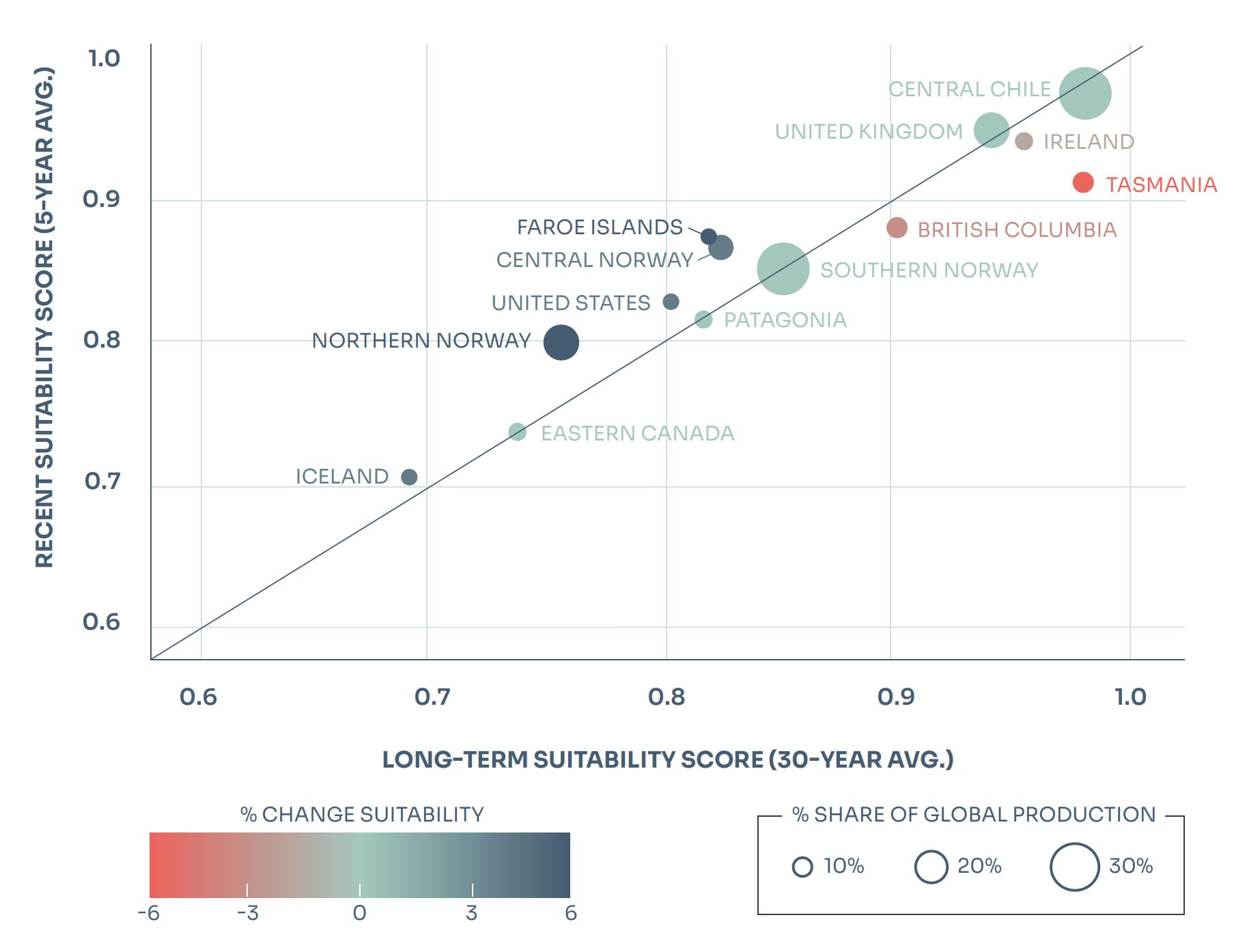Ocean Change in Salmon Farming Regions of the World
The ocean has absorbed 93% of the excess heat from human-caused global warming in recent decades. But this ocean warming isn’t evenly distributed. Ocean currents and vertical mixing through the water column move heat and other properties like salinity, nutrients, and oxygen around the global ocean. This means that changes in the physical, chemical, and biological properties of seawater vary widely depending on location. And it gets even more complicated near the coast where ocean currents are more dynamic.
This paints a fuzzy picture for ocean industries, like aquaculture, who need to understand how the ocean is changing around them and how those changes will affect their business. Scoot Science was interested in exploring this question from a regional perspective, to get an idea of how ocean conditions are changing in the major salmon farming regions of the world.
We created an environmental suitability score ranging from zero (bad) to one (good) based on our understanding of how sea water temperatures and oxygen content impact fish growth. (Note that coastal fish farms face other environmental challenges that aren’t considered here, including harmful algal blooms, lice and disease outbreaks, and storm damage.) Every one of the 3,700 salmon farming locations in the world received a daily suitability score based on observed ocean conditions.* Those daily scores were averaged over the last 30 years (to provide a long-term score) and the last 5 years (to provide a recent score). Here is what we found when we compared the two:

The blue shaded points above the diagonal black line have had improved ocean conditions over the last 5 years relative to the long-term average, while points below (shades of red) have declined in recent years. Tasmania, for example, has experienced the largest percent decline (the region has had more frequent and intense marine heat waves), but their recent suitability score of greater than 0.9 is still relatively good. Notably, the two regions that produce roughly 60% of all farmed salmon (the larger dots - central Chile and Southern Norway) have experienced conditions very similar to their long-term average.
Remember that these are regional averages and aren’t indicative of the experience of every individual fish farm in a location (see above: the ocean doesn’t change uniformly). And it’s not just the magnitude of ocean change, but also the volatility of ocean conditions that matters to fish farmers.
So what’s a fish farmer to do? We’ve found that operators in the regions that are dealing with more ocean volatility and ocean change are more innovative and likely to adopt technologies to help them adapt. Scoot’s SeaState platform provides farmers with site-specific ocean forecasts and analytics so that they can identify ocean risks, know when to act, and provide insights on how to address it. This improved understanding of ocean risks leads to healthier fish and more sustainable operations, and unlocks the opportunity for investors to support the growth of this critical food production sector.
Read more about this analysis and Scoot’s ocean risk model in our report: Green Sharpe: Making Oceans Investable.
*All analyses were completed with publicly available datasets, the modeling described here does not incorporate SeaState managed data streams.